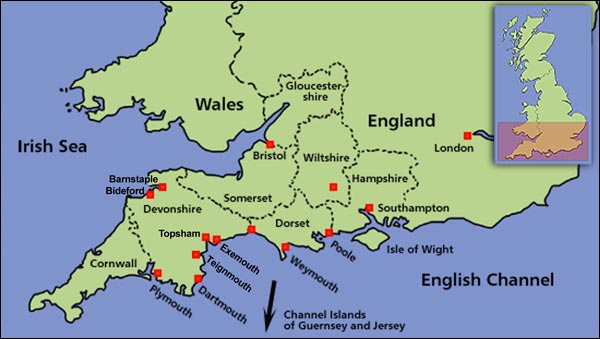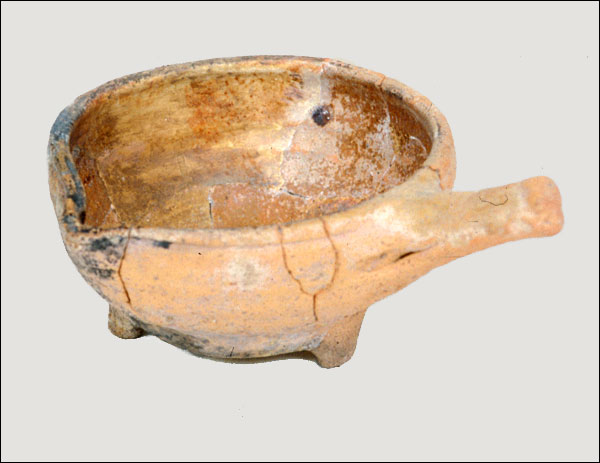Archaeology of the Migratory Fishery
In the same layers as the Native fireplaces, stone tools and refuse, there was found a fireplace of a style very different from the simple hearths of the Beothuks. It was built of flat rocks, not cobbles, was placed against a steep bank at the edge of the beach, and was rectangular, rather than round in form. In all respects it resembles a European construction much more closely than any of the Native hearths. Surrounding this fireplace, but in the same layers as the Beothuk stone tools, were fragments of ceramics that were produced in Portugal, the Basque provinces of France and Spain, northern France (perhaps Normandy) and West Country England.

Fishermen from all of these countries are known to have frequented eastern Newfoundland during the first half of the 1600s, some as early as the first decade of the 16th century. Charred and carbonized fragments of wood, some of it European oak and beech, surrounded the fireplace.
The best interpretation for this assemblage is that it is the remains of a cook room, a common and frequently mentioned feature of European migratory fishing shore stations. Fish were available near shore at Ferryland, and fishermen probably lived ashore, processing the day's catch each evening and spreading the fish to dry on nearby cobble beaches.

Above these first traces of European visitors to Ferryland were found two rough stone pavements, not particularly well constructed and apparently not designed for regular foot or other traffic. Archaeologists have interpreted these platforms as "artificial beaches" upon which fish were spread to dry. The fact that it was necessary to construct artificial drying platforms to augment the extensive natural cobble beaches of Ferryland probably says something about the importance of this harbour and the number of vessels that went there each summer.
As might be expected in an area used for drying fish, artifacts were few in number compared, for instance, to a cook room or living area. Bits of broken pottery were found, however, virtually all of it produced in West Country England, principally in North Devon. Absent from the stone platform were clay tobacco pipes that become common on English sites from the 1580s. We might infer, therefore, that these stone platforms were built by English visitors when that country began to dominate the eastern Newfoundland fishery after about 1560. Further, the absence of tobacco pipes pins the date of occupation to no more than 30 years following that time.




